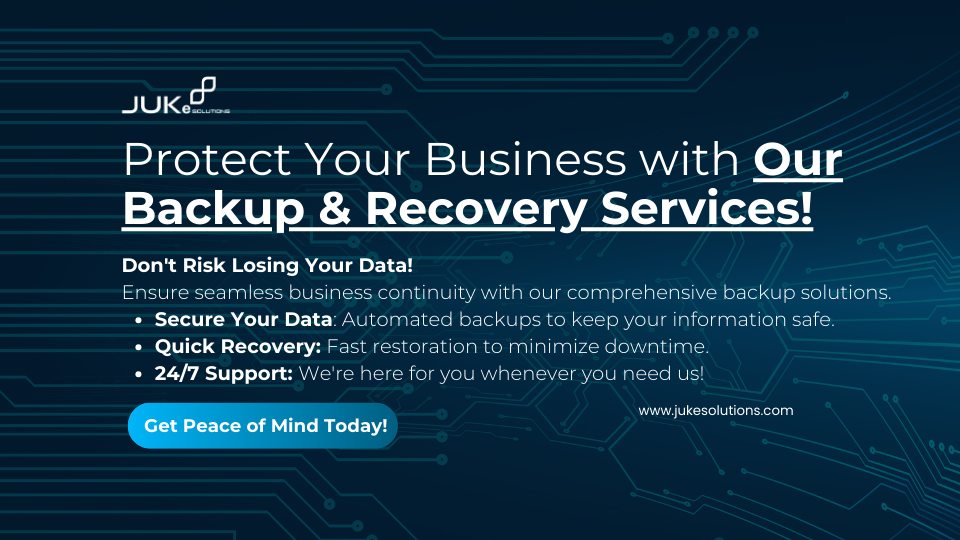In the digital age, data is a vital asset for businesses of all sizes, and protecting it is essential. Companies today face numerous risks, from hardware failures to cyberattacks, which could lead to data loss. To combat these risks, two key concepts are crucial: backup and recovery. Although often used interchangeably, these two have distinct roles in safeguarding data. In this article, we will delve into the difference between backup and recovery and why both are essential components of a robust data protection strategy.
What is Data Backup?
Data backup is the process of creating copies of data to ensure its safety in case of accidental deletion, hardware failure, or cyber threats. The backup data is stored separately, often in a secure location, such as the cloud or an offsite server. This separate storage is essential, as it allows companies to retain copies of their data and restore it as needed.
Key points of data backup:
- It involves creating copies of important data files.
- Backups are stored in a separate, often secure location.
- Backup is essential for data preservation and serves as the first line of defense against data loss.
What is Data Recovery?
Data recovery is the process of retrieving lost, corrupted, or otherwise inaccessible data. This procedure becomes necessary after data loss events, such as system crashes, malware attacks, or accidental deletions. Recovery focuses on restoring data to its previous, functional state, allowing businesses to resume operations smoothly.
Key points of data recovery:
- Data recovery is the process of retrieving and restoring lost data.
- Recovery involves implementing a plan to restore data from backups or alternative sources.
- A strong recovery strategy minimizes downtime and data loss impact on business operations.
Key Differences Between Backup and Recovery
To fully understand the difference between backup and recovery, let’s compare them based on a few important factors:
| Factor | Backup | Recovery |
| Purpose | Data preservation | Data restoration |
| Process | Regularly creating copies of data | Retrieving lost data after an incident |
| Primary Goal | Prevent permanent data loss | Minimize downtime and data loss impact |
| Frequency | Scheduled periodically (daily, weekly, etc.) | As needed, following a data loss event |
| Scope | Can cover all data or selected files | Focuses on specific data based on loss event |
Importance of Backup and Recovery for Business Continuity
Having both backup and recovery strategies is essential for organizations aiming to achieve business continuity. Backups alone are insufficient without a reliable recovery plan, as they merely store data copies. Recovery ensures that businesses can quickly access their data and resume operations, reducing downtime and maintaining service quality.
Backup Without Recovery
Although data is preserved, retrieving it promptly in the event of a disaster might be challenging. A recovery process is essential to guide the steps for restoring data.
Recovery Without Backup
If data is lost without a backup, recovery becomes nearly impossible, and the company could face data loss, financial costs, and damage to reputation.
Recovery Time Objective (RTO) and Recovery Point Objective (RPO)
When establishing backup and recovery plans, two critical factors help define how quickly data needs to be restored and how much data loss is acceptable:
- Recovery Time Objective (RTO): Refers to the maximum acceptable downtime after a data loss incident. It defines how quickly systems should be back online.
- Recovery Point Objective (RPO): Defines the maximum age of files that need to be recovered to ensure business continuity. It determines the frequency of backups.
Tips for Developing Effective Backup and Recovery Strategies
Prioritize Critical Data
The first step in developing an effective backup and recovery strategy is to identify and prioritize critical data. Not all data holds the same level of importance for business operations, so it’s essential to focus on information crucial for business continuity. Consider creating a data hierarchy, where essential data—such as financial records, customer information, and proprietary assets—are prioritized. This allows for a targeted recovery approach, ensuring that core business functions can resume quickly after an incident, minimizing downtime and operational impact.
Use Cloud Storage
Utilizing cloud storage is an effective way to modernize backup strategies. Cloud-based solutions offer flexibility, scalability, and cost-effectiveness that traditional storage options might lack. With cloud storage, your data is securely stored off-site, reducing the risk associated with on-premises backups and improving resilience against physical damage or localized cyberattacks. Additionally, most cloud providers offer data redundancy across multiple locations, meaning your data is better protected and can be accessed quickly in case of a disaster.
Regularly Test Recovery Plans
A backup is only as good as its ability to recover data when needed. Regular testing of recovery plans is crucial to ensure that they function as intended. These tests reveal any gaps or areas for improvement, allowing you to address weaknesses before an actual emergency occurs. Testing can also be a chance to train your IT team on disaster recovery procedures, ensuring everyone knows their role in the process. Aim for periodic tests—quarterly or bi-annually—to maintain readiness and confidence in your backup and recovery systems.
Automate Backups
Automated backups are a simple yet powerful tool for improving reliability and consistency. Manual backups can introduce human error and result in missed schedules, which could leave data unprotected during critical times. By automating backups, you ensure that data is consistently and reliably saved at scheduled intervals. Automation not only saves time but also ensures that backups occur even if staff are unavailable. Consider using backup software or solutions with automation features that can adjust to your specific backup needs and data growth.
Establish Clear RTO and RPO Metrics
Recovery Time Objective (RTO) and Recovery Point Objective (RPO) are vital metrics in any backup and recovery strategy. RTO defines how quickly a business needs to recover systems after an incident, while RPO sets a limit on how much data loss is acceptable. Together, they guide the creation of a backup and recovery strategy that aligns with business goals and risk tolerance. Setting these parameters helps prioritize recovery efforts, allocate resources efficiently, and ensure that downtime and data loss stay within acceptable limits, supporting a smooth return to normal operations after an event.
In conclusion, understanding the difference between backup and recovery is fundamental to creating a resilient data protection strategy. Backup focuses on data preservation, ensuring copies are readily available, while recovery ensures timely access to data and systems after a loss. Integrating both elements ensures business continuity, protects critical information, and supports long-term success. Embracing these strategies can help businesses prepare for unforeseen events, reduce risks, and maintain operational stability.
Ready to Protect Your Data?
Understanding the difference between backup and disaster recovery is crucial for your business’s continuity. At Juke Solutions, we offer robust solutions like Veeam for efficient backup and NetApp for comprehensive disaster recovery. Don’t leave your data to chance—contact us today to learn how we can help safeguard your operations!
Read more: How to Make Recovery Your Top Priority


